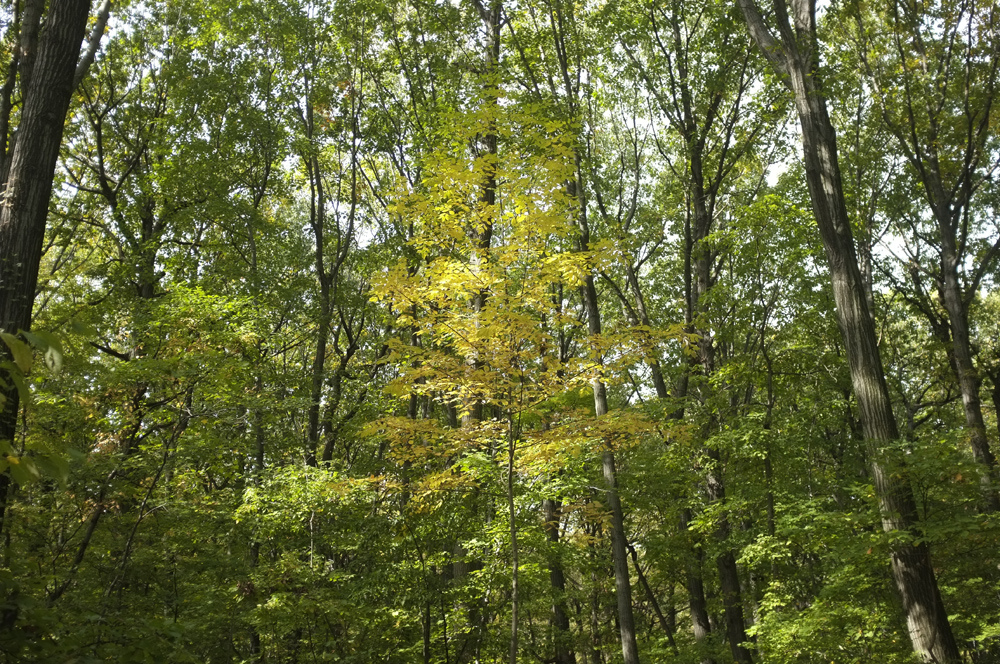
Although forest is not the first image to come to mind for New York City, the five boroughs have no shortage of green space. We’re lucky: parkland constitutes nearly 20% of the city’s land area, the highest of any city in the United States. Our woodland has been nationally recognized. The city’s canopy provides key benefits both to nature and to people.
However, city parks operate on a local level and don’t parallel the strength that vast, regional forests have in climate resilience. Earth’s forests directly and indirectly impact the future for everyone, especially those of us living in urban centers. The “New York Declaration on Forests,” a comprehensive international review of global forest policy introduced at the most recent United Nations Climate Summit, shows the potential to reshape the governance of natural forests in the near future. The list of participants includes the entire range of potential stakeholders: governments, corporations, indigenous people native to endangered forest areas, and the big NGO’s. But unfortunately, the declaration also exemplifies another trend in the climate debate: a trend of furthering discourse rather than demanding political action.
The “Declaration,” which was presented on September 23 at the UN Climate Summit, has three main goals. The first two goals are to halve the amount of the earth’s natural forest loss by 2020, and to completely eliminate its forest loss by 2030. Restoring millions of acres of land area to natural forests worldwide is the third tenet of this declaration.
Theoretically, the document is an excellent plan for improving climate resilience. Forests are crucial in sequestering carbon emissions. By stopping forest loss, carbon pollution is estimated to be reduced by 4.5 – 8.8 billion tons. While this alone is not a solution to emissions (an entirely different topic), restoring forests is an incredibly cost-effective strategy in mitigation. The enactment of such a declaration would also force world leaders to drastically rethink land use and environmental policy.

The United States and the entire European Union have already signed the declaration. Multiple tropical countries, where deforestation rates have skyrocketed over the last few decades, have followed suit. Large corporations, such as McDonalds and Nestle, endorsed the declaration as well. As wonderful as the results sound, the goals of the New York Declaration on Forests are overly optimistic. The major shortcoming of this declaration is that it is not legally binding. The 130 signatures that the document has garnered represent intentions, not hard commitments.
Because of the gap between its ideals and what it delivers in practice, Greenpeace, a prominent environmental organization, did not join in signing the document. Greenpeace International Executive Director Kumi Naidoo explained the organization’s reasons for rejecting the Declaration in a September 23 press release:
“Halting the global loss of natural forests by 2030 and eliminating deforestation from agricultural commodities by 2020 at the latest would mean that years of continued forest clearance still lie ahead of us. While we are celebrating announcements on paper today, forests and forest peoples are facing imminent threats that must be averted if we want the Declaration to become reality.”
The spatial scale of forests is an integral part of climate resilience. Natural forests cover over 9 billion acres globally. By comparison, Central Park, which bears resemblances to a forest, is an artificial landscape that covers a minuscule 843 acres of land. While the relationship between cities and forests is not initially apparent, natural forests help facilitate urban development. We draw resources from them, including New York City’s plentiful water supply.
Peter Holmgren, Director General for the Center of International Forestry Research, reinforced the crucial role of forests at the Colloquium on Forests and Climate on September 24 at Columbia University:
“Forests and forestry are key to so many parts of sustainable development, and development objectives. It’s relevant to poverty, it’s relevant to health, it’s relevant to green growth, it’s relevant to biodiversity, agricultural productivity, resilience, and of course not least in handling climate change.”
Aside from carbon sequestration and climate regulation, they provide paper, timber and other goods. They are also vital for nutrient cycling and water filtration. The New York Declaration on Forests lacks a formal plan to protect and restore forests. For a start, national and international legislature must be reformed. Climate change is an issue that requires the immediate attention of worldwide governments and corporations. A list of signatures with no legal relevance does not do climate planning enough justice. Forceful, verifiable political action is required. Small steps won’t do it, it really is time for leaps.
